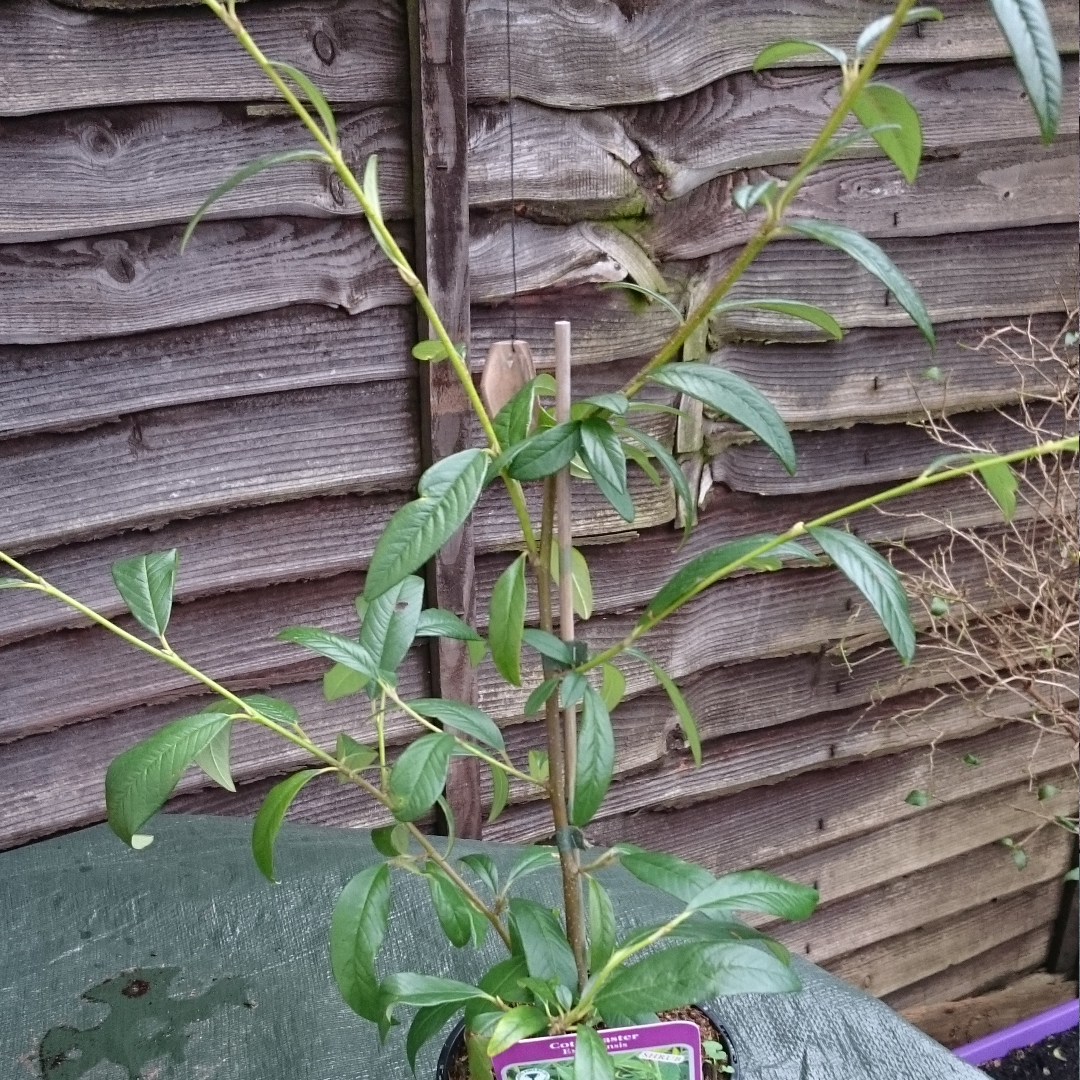
Cotoneaster salicifolius Exburiensis
Cotoneaster tree
Cotoneasters are very popular garden shrubs, grown for their attractive habit and decorative fruit. Many are cultivars, some of hybrid origin; of these, some are of known parentage, such as the very popular Cotoneaster × watereri Exell (Waterer's Cotoneaster; C. frigidus × C. salicifolius), while others not. C. salicifolius Exburiensis is an ornamental tree with a bushy arching shape. The dark green leaves, held all year are a perfect foil for the clusters of white flowers in early summer that develop into long lasting apricot-yellow berries by autumn,
Contributed by @vickster
-
Full sun to partial shade
-
Very little water
-
Full Frost Hardy: 5F (-15°C)
-
Rich and free draining
Common name
Cotoneaster tree
Latin name
Cotoneaster salicifolius Exburiensis
type
Shrub
family
Rosaceae
ph
6.5 - 8.0 Acid - Neutral
Plant & bloom calendar
-
Best time to plant
full grown dimensions
 1.00 M
2.00 M
1.00 M
2.00 M
Cotoneaster salicifolius Exburiensis
Cotoneasters are very popular garden shrubs, grown for their attractive habit and decorative fruit. Many are cultivars, some of hybrid origin; of these, some are of known parentage, such as the very popular Cotoneaster × watereri Exell (Waterer's Cotoneaster; C. frigidus × C. salicifolius), while others not. C. salicifolius Exburiensis is an ornamental tree with a bushy arching shape. The dark green leaves, held all year are a perfect foil for the clusters of white flowers in early summer that develop into long lasting apricot-yellow berries by autumn,
Propogation by cuttings
From Early Summer TO Early Summer
Cotoneasters can be propagated with softwood cuttings taken in early summer. The use of a rooting hormone is highly recommended.
Propagation by layering
From Mid Autumn TO Late Autumn
Low growing species can be propagated by simple layering in the fautumn. Pin a low growing stem to the ground, using a piece of stiff wire bent into a U, leaving the last 6 to 12 inches of the stem exposed. Cover the pinned area with soil, then bend the tip sharply into a vertical position (for upright plants) and nick the bark on the underside of the bend. Provide a stake to hold it in place. Once the layer is well rooted, it can be severed from the parent and moved to another part of the garden.
Planting
From Early Autumn TO Late Autumn
Purchase a container-grown plant from a reputable nursery. The best time to plant cotoneasters is the autumn although they will also do well if planted in the spring. Pick a spot where you are certain you want to keep the plant as cotoneaster does not transplant easily. The best locations have full to partial sun and well-drained, alkaline soil. Avoid areas where the soil tends to experience saturation for extended periods. Plant ground cover plants 5 feet apart. Space larger plants about 4 to 6 feet apart.








